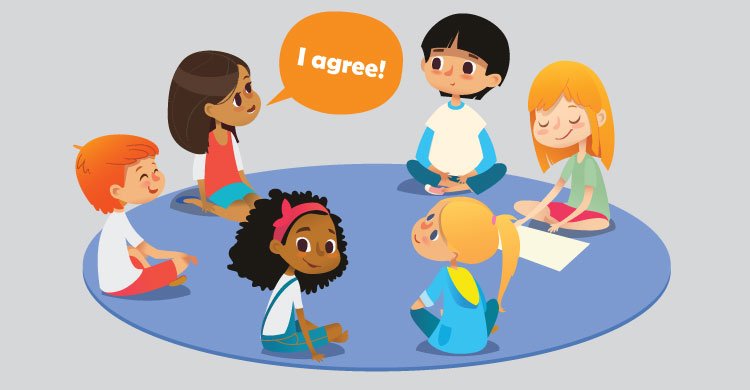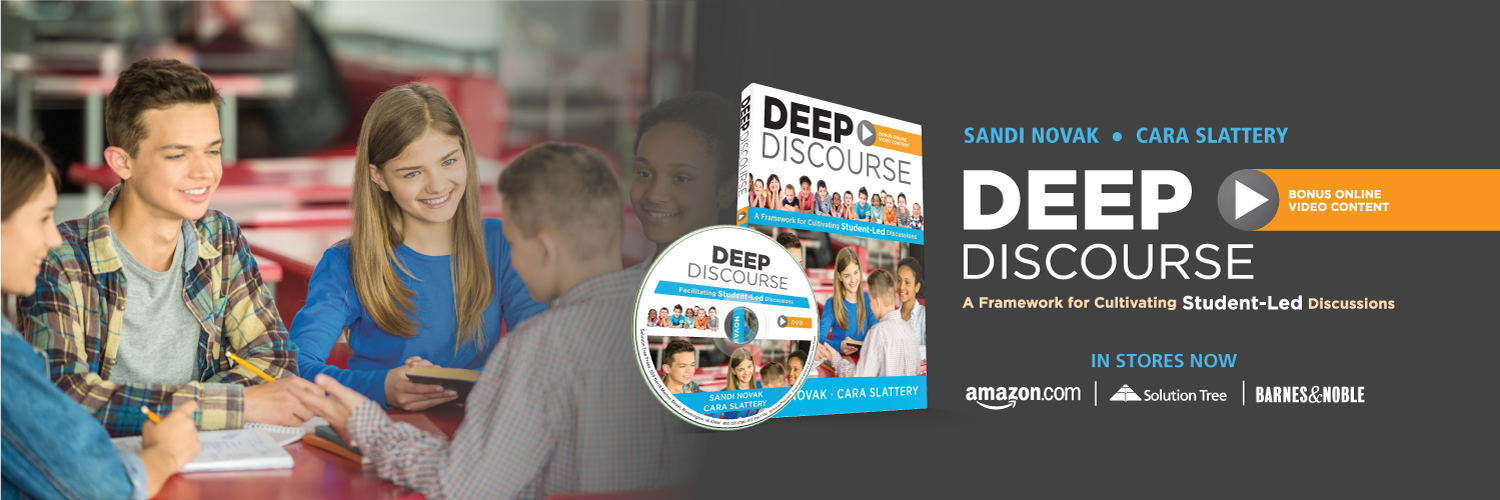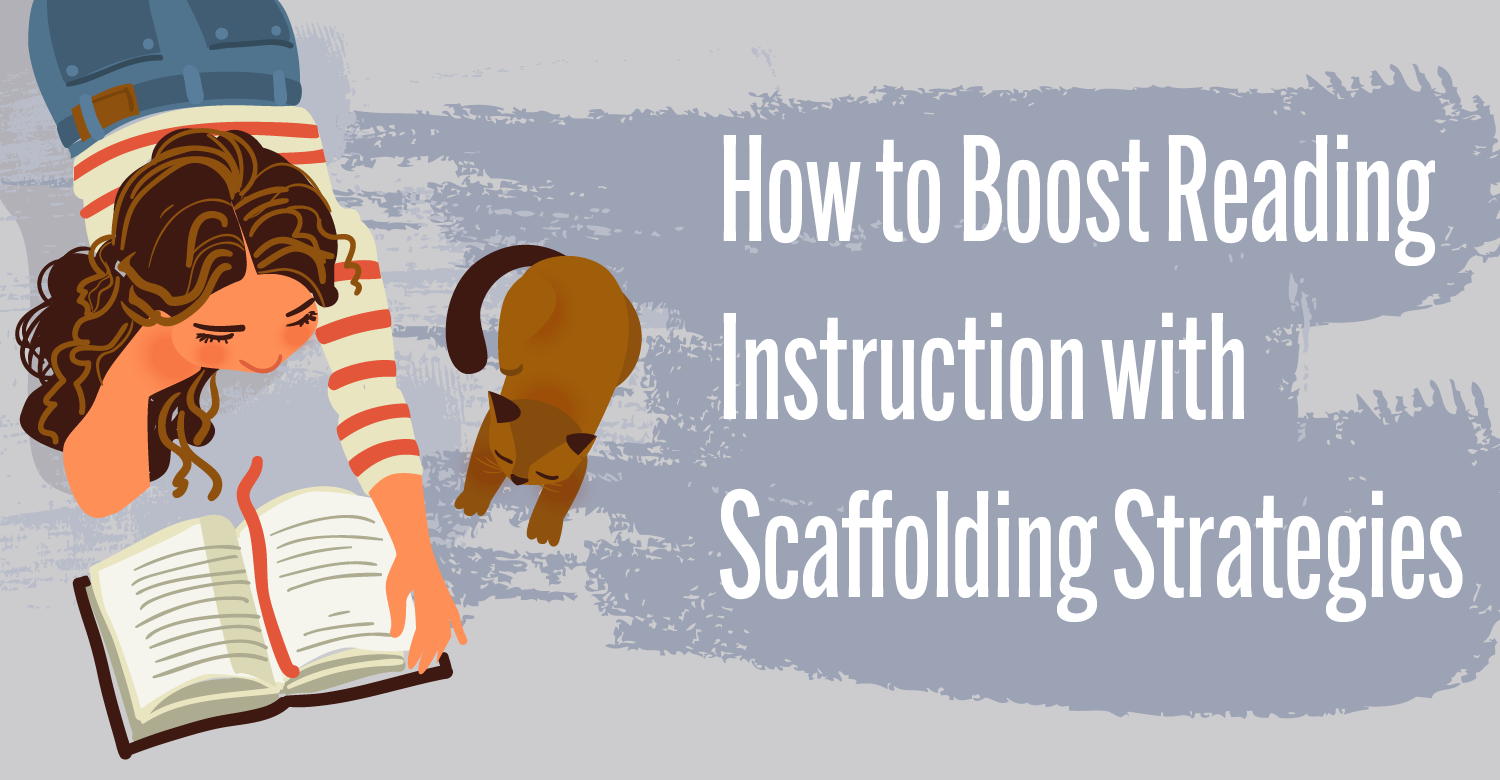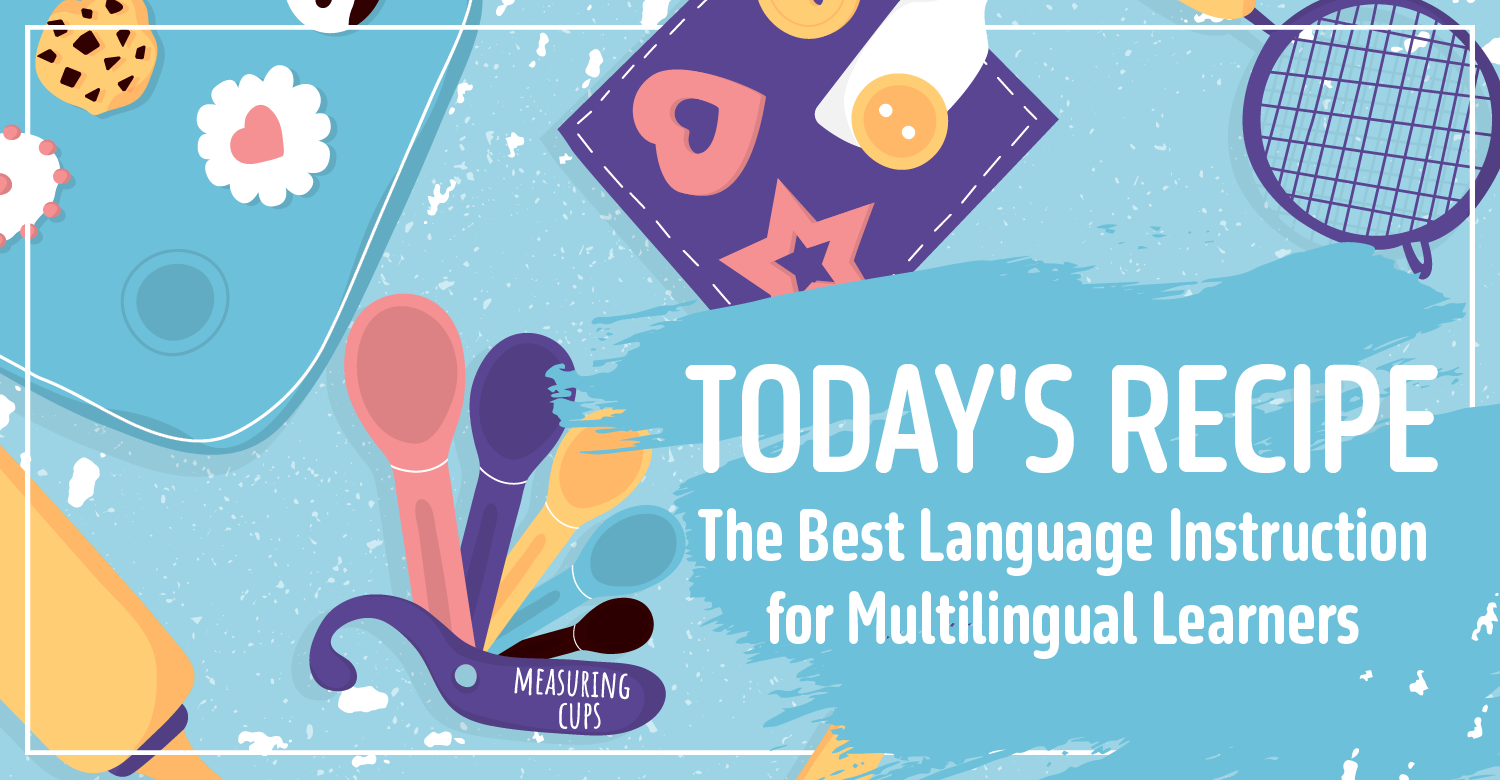This is the eleventh post in a series on student-led, small-group discussions. To read the other posts, see “Small Groups, Big Discussions.” The series explores the challenges to effective small-group discussions and how to address them. The content is connected to the book Deep Discourse.
Ms. Hartl’s second-grade class had just finished a partner conversation of asking and answering questions about a text, and students were excited to apply the skill in their independent reading. Were all students able to ask and answer questions with their partners? What did the teacher do to ensure students were prepared for these conversations?
When I work with primary-grade teachers, they often ask, “What type of discussions can young students have on their own?”
It’s important to know the scaffolding required to ensure success for students as they grow their skills in facilitating their own discussions. In this blog, I will address the different techniques teachers of young students have used to help their students become more self-directed in their conversations. Specifically, I will discuss the differences and similarities used by K–2 teachers versus 3–12 with regard to group membership, type of texts, and communication skills being taught and modeled.
Group membership
The group size is an important consideration when planning for student-led discussions. You need enough members to offer diverse perspectives, but a small enough group for every voice to be heard. Whereas the ideal group size for student-led discussions in third grade and beyond is four to six, young students do better in groups of two to three.
Children in kindergarten through second grade are still learning to take turns and listen while others are speaking; therefore, they can best practice these skills with fewer members in their group. Primary-grade teachers have found success by beginning with partner work before shifting students into groups of three.
Just advancing primary students beyond think-pair-share or turn-and-talk opportunities to four- or five-minute conversations with one or two other kids can be a challenging but necessary incremental step to bridge to richer discourse. The depth of discussion will be stronger, and students will construct deeper meaning if they are afforded time to go beyond surface-level talk.
Type of texts
For older students to reach deep, rich discourse, it helps when they talk specifically about a body of text. Concrete examples drawn directly from the text, other resources, or their experiences help bring the discussion to life. These older students typically are reading more complex texts; therefore, their discussions can occur at the end of chapters.
On the other hand, younger students read picture books with not a lot of printed words. Therefore, their discussions can occur after they read the whole text. Students who read several texts by the same author should have enough material to sustain a longer, four- to five-minute discussion if they are given written prompts or taught to gather notes and questions as they read.
Students from one first-grade classroom were taught to make a chart comparing two texts. Then they were given time to talk about the similarities and differences with their partners. This practice requires students to do the work without teacher assistance, which aligns to the standard expectations for this age group. Often, we want to help them because we think the task might be too difficult or students may lack confidence when they begin. But students learn best when they are experiencing some struggle. They learn and grow as they problem solve situations just beyond their comfort.
Watch the video to hear first-grade students engage in this work:
What instructional moves would you engage in next to advance these learners’ skills?
Communication skills
Students may not advance their communication and group membership skills without providing explicit teaching and modeling, allowing them time to practice, and giving them specific feedback. Younger students need time to practice sharing their speaking and listening time. They need to see examples of groups that function well and engage in follow-up conversations of what healthy, age-appropriate discussions look and sound like. In our book, Deep Discourse: a Framework for Cultivating Student-Led Discussions, we provide a plethora of video examples.
Many students don’t come to school equipped with these skills, and they don’t just develop naturally on their own. Providing instructional support that focuses on content and discussion skills while gradually releasing responsibility to students will strengthen engagement, and learning will soar.
All students should be given ample opportunities for their voices to be heard in our classrooms. Even young students should be given time to discuss content beyond just short turn-and-talk moments. Let’s let our students talk!
Next time, I answer questions about bringing discussions to closure. Look for the blog post on March 29.
Sandi Novak, an education consultant, has served as an assistant superintendent, principal, curriculum and professional development director, and teacher. She has authored three books: Deep Discourse: A Framework for Cultivating Student-Led Discussions (Solution Tree, 2016), Literacy Unleashed (ASCD, 2016), and Student-Led Discussions (ASCD, 2014). She also authored the Online ASCD PD Course, “Building a Schoolwide Independent Reading Culture,” as well as journal articles and blogs. Visit Sandi’s website, join her professional LinkedIn community, or send her a tweet @snovak91335.
References:
Novak, S. & Slattery C. (2016). Deep discourse: A framework for cultivating student-led discussions. Bloomington, IN: Solution Tree.
[author_bio id=”1117″]







